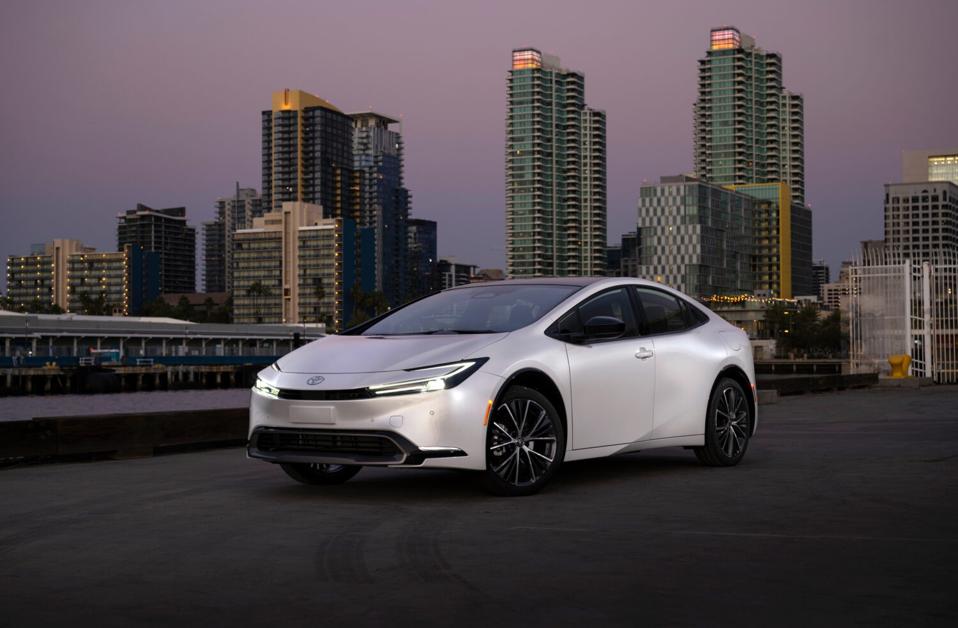When the Biden administration lowered electric vehicle adoption targets from 67% to 35% by 2030 it did two things—throw a lifeline to automakers feeling the pressure to produce and sell EVs while tossing a big bucket of ice cold water on companies which sell only battery powered vehicles.
The result is new momentum for production and sales of hybrid vehicles according to a new study released Monday by research company Cloud Theory titled “Charging Ahead: Hybrids Come into Sharper Focus as EV Aspirations Meet Reality”
“In terms of the balance between inventory share and movement share, EVs have been in an oversupply situation since the beginning of 2023 when the former started to outpace the latter,” the report said. “Hybrids, meanwhile, have demonstrated that there is room to grow supply to meet an increasing demand scenario, as movement share of these vehicles has consistently outpaced inventory share over the past three years.”
That dichotomy is clearly illustrated in the pair of charts below from the report showing inventories for both EVs and hybrids rising, but their movement shares, or how well the inventories are selling, are headed in opposite directions.
Reducing the aggressive targets for EV conversion in light of the reality of consumer preferences, is likely to also have opposite affects for traditional automakers and those focused solely on EVs.
“Ford just said they’re going to have a hybrid version of every vehicle in their lineup. GM is going to reintroduce their hybrid technology. They all recognize that this provides a path to meeting those regulatory standards in a way that the aggressive level that had been previously set did not. That gives them a secondary path to pursue,” observed study author Rick Wainschel vice president data science and analytics at Cloud Theory in an interview. “I think what that does is it changes the dynamic and the competitive structure between the traditional OEMs in their favor and with Tesla and Rivian and Polestar and the others, which is going to make their road to success harder.”
Indeed, last week Tesla reported a sharp declines in both revenues and net income during the first three months of this year.
According to its 8K filing with the SEC Tesla’s Q1 revenues drop 9% from the same period a year ago and net income plummet 55%. Those results were largely affected by production issues, lower pricing and lower sales according to the filing.
Overall, the pace of EV introductions and aggressive production has slowed, according to the report. It noted the number of models that have average inventory levels of 1,000 or more stood at 33 in Q1 2024.
“While this is the highest number to hit that milestone to date, the pace of that growth slowed considerably over the past year,” the report said.
As the move to hybrids grows in the face of slower building EV sales, the ability to meet government emissions and fuel economy standards is shifting as well according to the report.
“OEM parent corporations such as Toyota Motor Corporation, (which has by far the strongest hybrid lineup), Hyundai Motor Group (which has a well-developed lineup in both sectors), Stellantis, Honda Motor Company, and Ford Motor Company (which all have well-developed hybrid lines) now have a more varied path to achieve fuel economy aims and meet regulatory requirements by replacing gas-powered vehicles with tried-and-true hybrid technologies,” the Cloud Theory report said. “General Motors plans to get back into the hybrid game, which will open up options for that company as well.”
Hybrid technology has been around for at least three decades—both traditional and plug-in-electric hybrid, PHEVs, which allow a vehicle to run short distances on electric power only.
So while the ultimate goal for both the government and the industry is a total EV future, Wainschel says the familiarity and convenience of hybrids is proving to be a comfortable compromise for customers not ready to make the full conversion.
“It gives consumers that comfort with, okay, maybe I have to plug this thing in, but I’m not going to be left in the lurch if I run out of juice. I have a backup.”
It’s also a welcome backup for automakers whose plans to go all-in on EVs are running low on juice.

